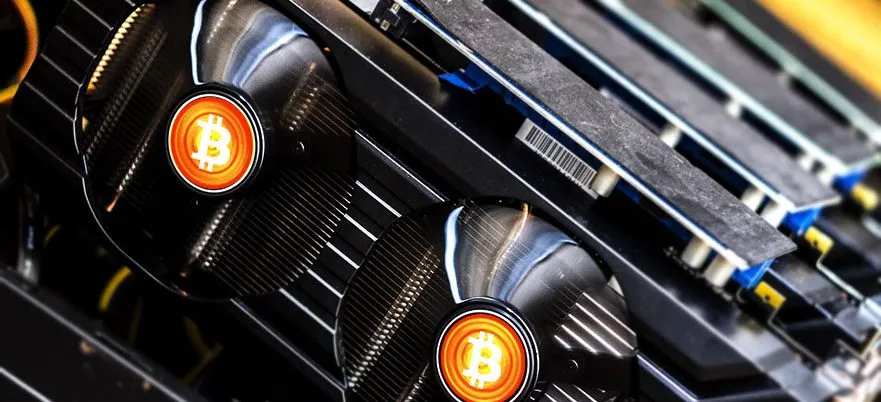|
Getting your Trinity Audio player ready...
|
Recently, NewsBTC.com posted a sensational article, with a rather warped sense of what Bitcoin is and is not. The website is well known for its pro Blockstream-Core stance – not that it should matter. Because journalism, no matter what your inclination should report on truths.
A recent article title “Craig Wright Claims Only Corporations Need to Dictate Mining and Non-mining Nodes Don’t Matter”, shows pretty much everything that Core have failed to understand summed up in one neat article.
Trusting your source of information, is important. If you can’t get straight facts, find another outlet, find another source. But don’t take my words for it, I’m going to back up what I say, and dismantle each point this article makes, and I’ll back it up with proofs.
The first line in fact, states “The concept of mining Bitcoin has always been somewhat controversial”. It was in fact, never controversial to begin with. It only became controversial, because one entity, namely, Blockstream’s Core, decided to make an issue out of it. Mining underpins Bitcoin mechanics, and it is an absolutely essential incentive mechanism to ensure longevity and workability of the overall system. But the issue has been heavily politicized because of one fundamental issue – the blocksize. We hear it over, and over again. But this in essence, is why this article was written.
Core’s main argument against raising the blocksize is that it will lead to mining centralization. That is, they expect, only a few miners to have the resources to handle bigger blocks, and therefore lead to ‘centralization’, a scenario, where these few miners hold majority of the power.
What they fail to tell you is that the network actually gives disincentives to any miner with a slice too large of the pie. The system is actually designed, to prevent a miner from taking over the system.
A paper authored by Professor of Economics, Nicola Dimitri, deduces that Bitcoin is monopoly resistant. The paper presents a game theoretic framework, modelling Bitcoin mining. The Nash equilibrium of the game finds the motivations for being a miner, and moreover, finds that the intrinsic structure of mining activity prevents the formation of a monopoly. This is because in an equilibrium with two miners, “both of them will have positive expected profits for any level of the opponent’s costs. A monopoly could only form if the rate of return on investment were higher outside bitcoin.”
But on the other hand, mining was from the beginning designed to be competitive. Yes, miners are in competition with one another, miners will compete to outperform one another. These miners, are effectively companies. Competition exists, but the competition is necessary, because it’s this competition that indeed makes Bitcoin work in the first place.
“At first, most users would run network nodes, but as the network grows beyond a certain point, it would be left more and more to specialists with server farms of specialized hardware.” – Satoshi Nakamoto 2008.
The bootstrapping phase of the Bitcoin project is well and truly over. No more should regular desktop users sit and mine at their machines (or run non-mining nodes, for that matter, unless necessary in the course of business). The competitive nature of mining, is that these miners would seek to compete, in a self-interest, profit seeking way. This is why the incentive structure was placed into Bitcoin, this is why miners make profit, and hence, this is what secures the network with incredible hashpower. It is this incentive structure which makes Bitcoin the most secure form of money in existence.
NewsBTC fails to identify these key economic incentives, and attacks Dr Wright, for tweeting “Bitcoin was always designed so corporation would run mining. The lie you have been fed is that running a non-mining node matters at all”.
Then the article states that Dr Wright cannot be Satoshi, because his vision for Bitcoin shows “clear favouritism toward centralized solutions”.
I think I just had an aneurism. Didn’t Satoshi say that as the network grows, mining “would be left, to specialists with server farms of specialized hardware”?
Ironically, newsBTC also quoted Satoshi with the following “The design supports users just be users. The more burden it is to run a node, the fewer nodes there will be. Those few nodes will be big server farms. The rest will be client nodes that don’t generate”. So newsBTC actually quotes Satoshi, supporting the very argument that Dr Wright was claiming. It’s almost as if the irony was gone on them.
But the article also mentions ‘nodes’, and attacks Dr Wright again for reducing the importance of non-generating nodes.
Dr Wright’s inference here is that non-mining nodes are nowhere near as important as Core would like to have everyone believe. Not everyone that wants to use Bitcoin should have a node. Ironically, during the battle with BitcoinXT, Core heavily dismissed the importance of nodes themselves. Ofcourse this was a political line, seeing that BitcoinXT had the higher node count. And so during the battle with Bitcoin Unlimited, Core saw fit to increase their own node count.
Every day users don’t need to carry a full node laptop around to do transactions at their local Wal-Mart. Bitcoin is designed to be peer-to-peer at a fundamental level. That is, a customer, can pay a merchant by signing a transaction. Carrying a node around does nothing for the spender – only the merchant cares about being paid, and it is the merchant who should validate.
Bitcoin mining is incentive based. It is competitive. If Bitcoin is to grow, we need to allow these entities to compete. Contrary to what Blockstream’s Bitcoin Core developer Luke-jr believes, which, to quote “…that mining has profits at all is a bug”, couldn’t be further from the truth. In fact, you couldn’t get your logic more backwards than that.
Eli Afram
@justicemate

 07-12-2025
07-12-2025 





